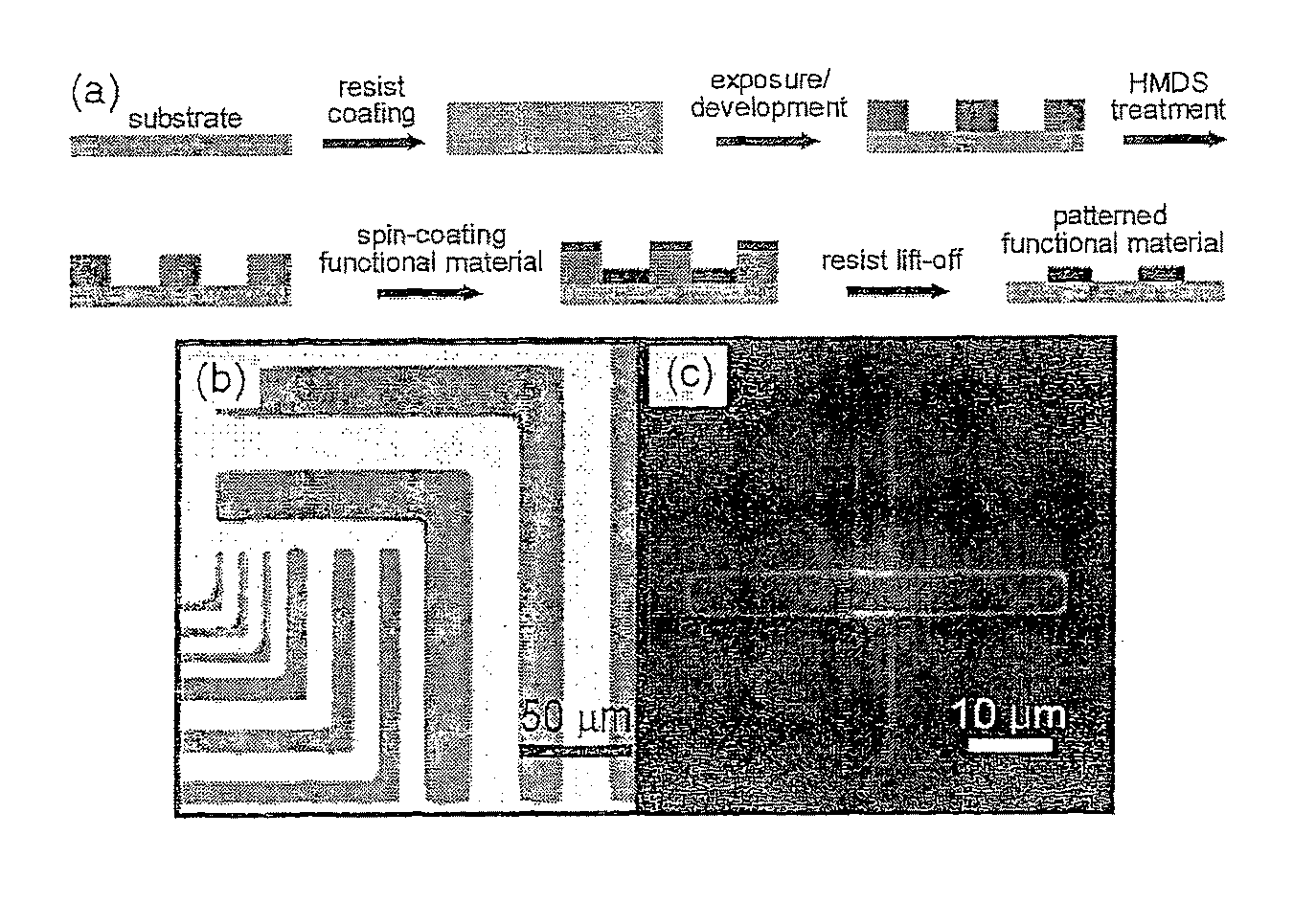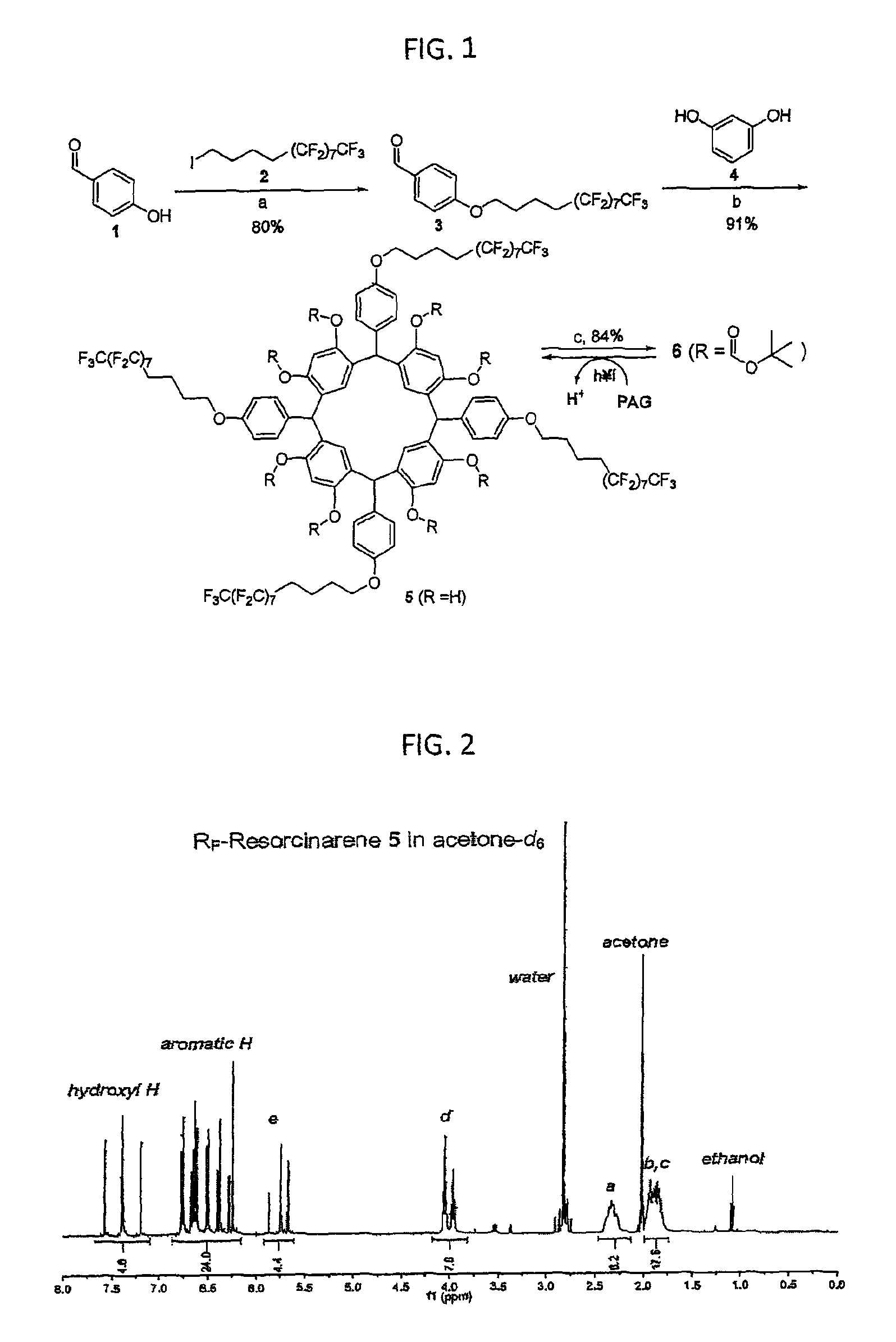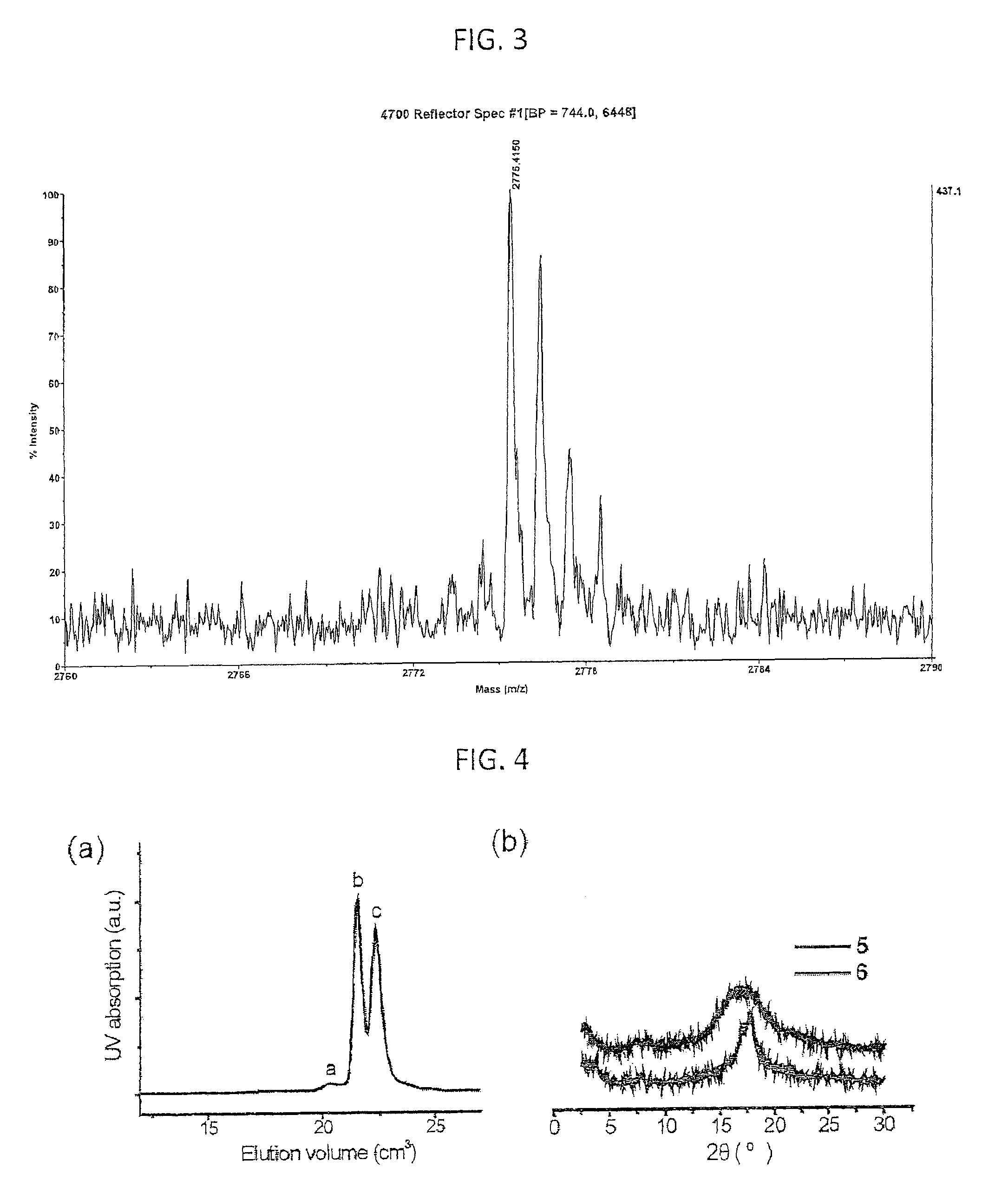Orthogonal processing of organic materials used in electronic and electrical devices
a technology of organic materials and electronic and electrical devices, applied in the direction of photosensitive material processing, photomechanical equipment, instruments, etc., can solve the problems of deteriorating the performance of organic materials, using conventional organic solvents, and unable to make organic semiconductors and other organic electronics or organic electrical structures using known photolithographic patterning, so as to avoid damage to organic layers during patterning
- Summary
- Abstract
- Description
- Claims
- Application Information
AI Technical Summary
Benefits of technology
Problems solved by technology
Method used
Image
Examples
Embodiment Construction
[0060]The term chemical processing as used herein shall mean any chemical treatment such as cleaning, depositing a second layer from solution to form multilayer devices, and depositing / developing resist layers for photolithographic patterning.
[0061]Fluorous Solvents
[0062]Fluorous solvents are perfluorinated or highly fluorinated liquids, which are typically immiscible with organic solvents and water. Among those solvents, segregated hydrofluoroethers (HFEs) are well known to be highly environmentally friendly, “green” solvents. HFEs are non-flammable, have zero ozone-depletion potential, low global warming potential and show very low toxicity to humans. HFEs were introduced to industry in 1994 as third generation hydrofluorocarbon liquids to be used as replacement of chlorofluorocarbons and hydrochlorofluorocarbon refrigerants. HFEs have also been demonstrated as environmental friendly cleaning solvents for electronics. Nevertheless, the use of HFEs in the processing of organic elec...
PUM
| Property | Measurement | Unit |
|---|---|---|
| boiling point | aaaaa | aaaaa |
| boiling point | aaaaa | aaaaa |
| source-drain voltage | aaaaa | aaaaa |
Abstract
Description
Claims
Application Information
 Login to View More
Login to View More - R&D
- Intellectual Property
- Life Sciences
- Materials
- Tech Scout
- Unparalleled Data Quality
- Higher Quality Content
- 60% Fewer Hallucinations
Browse by: Latest US Patents, China's latest patents, Technical Efficacy Thesaurus, Application Domain, Technology Topic, Popular Technical Reports.
© 2025 PatSnap. All rights reserved.Legal|Privacy policy|Modern Slavery Act Transparency Statement|Sitemap|About US| Contact US: help@patsnap.com



